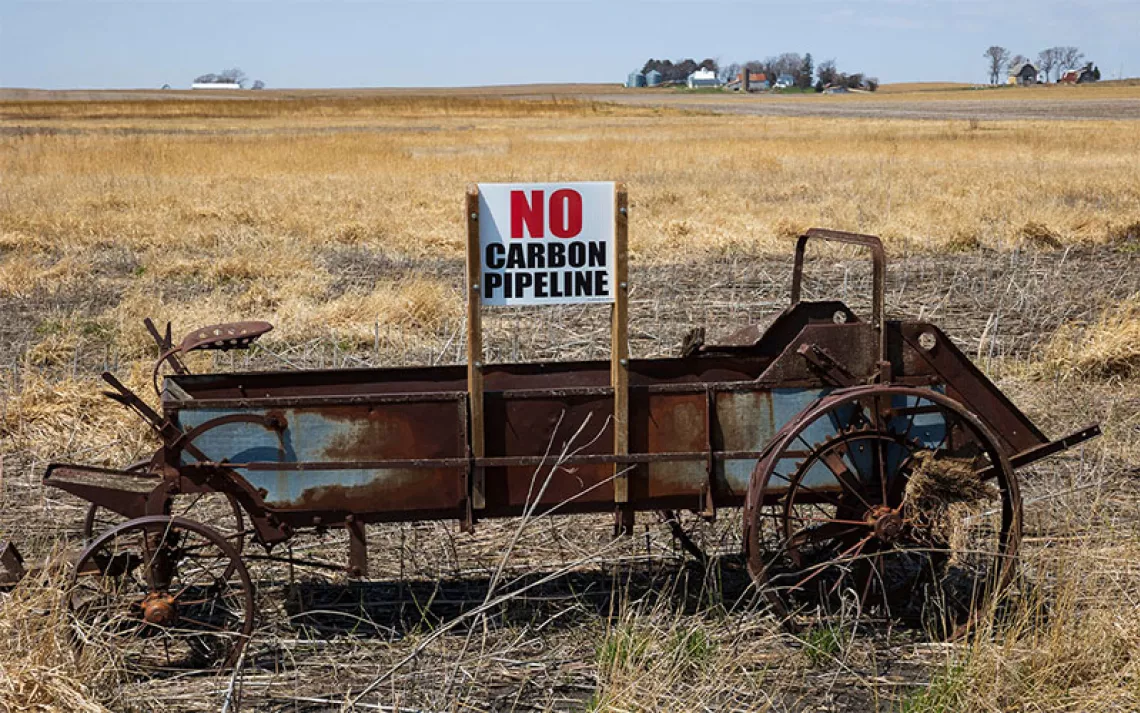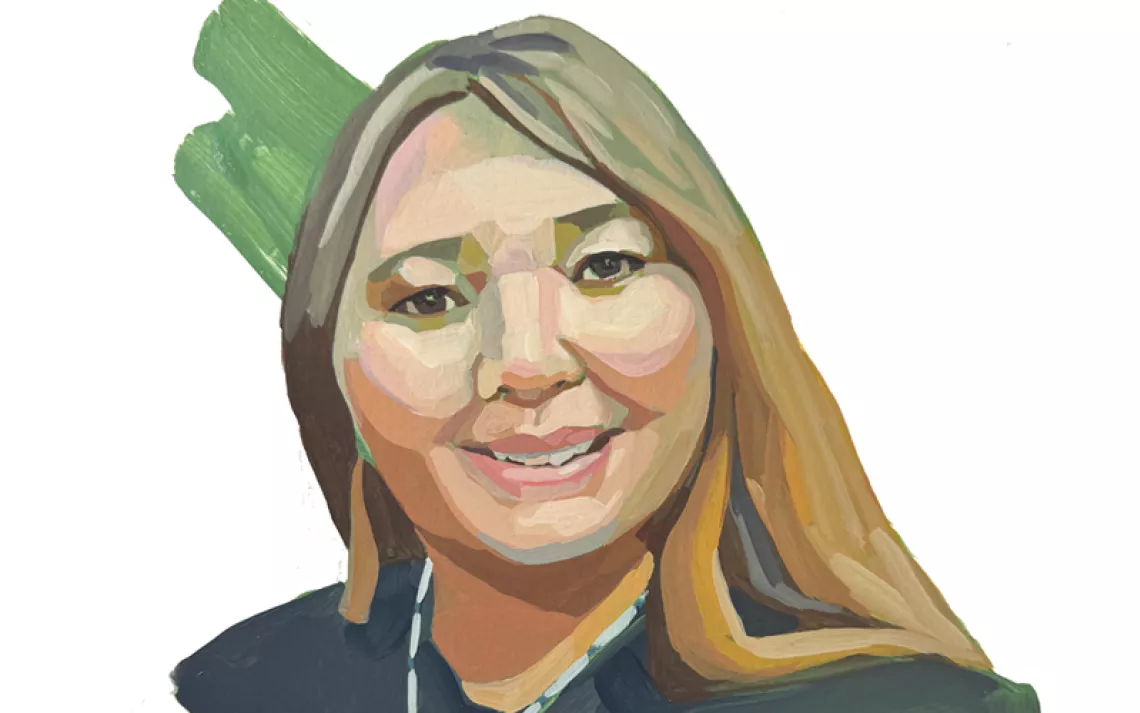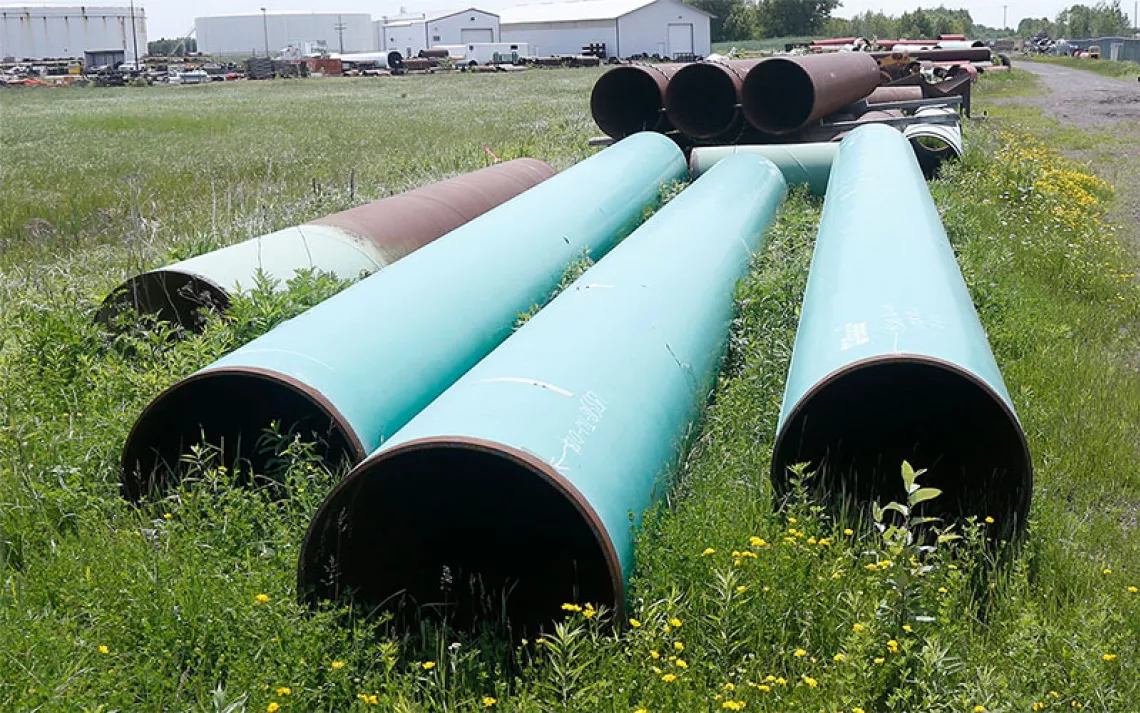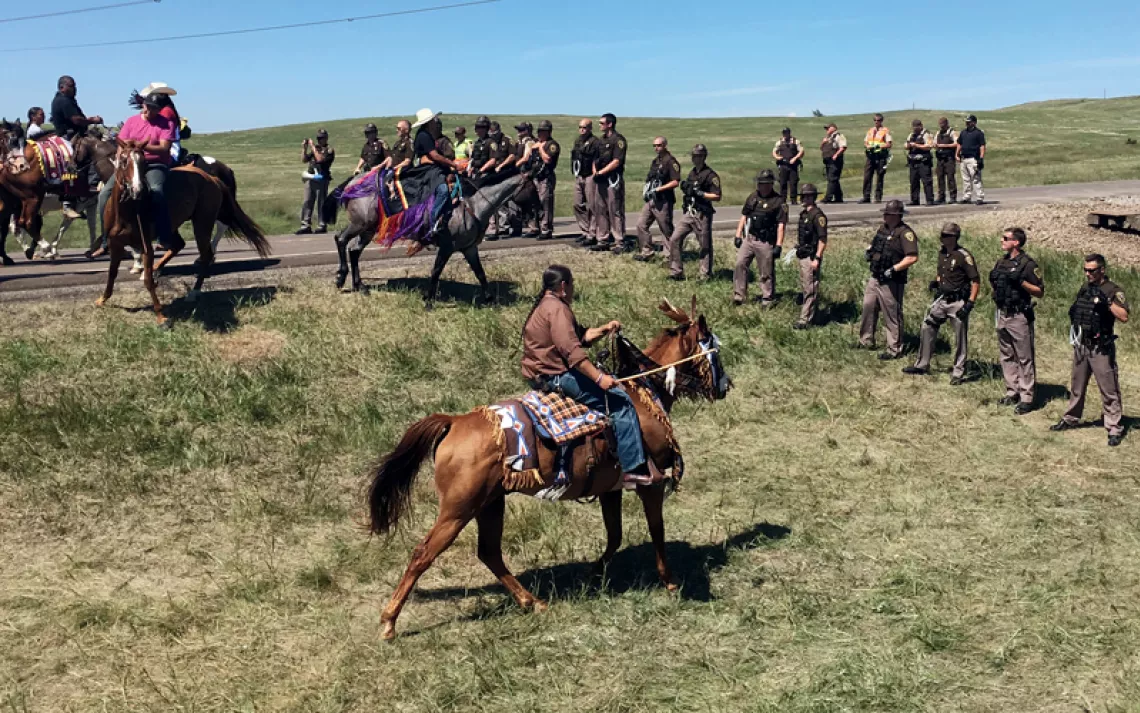How to Stop an Oil Pipeline
Water protectors in northern Minnesota build a community to block Line 3

Native and allied water protectors march to the construction site for the Line 3 oil sands pipeline in January. | Photo by Kerem Yucel via AFP / Getty Images
Since 2018, Big Wind, a member of the Northern Arapaho Tribe, has lived at a protest camp in northern Minnesota called Namewag (na-meh-wag). It’s the Ojibwe word for sturgeon—the great freshwater fish that is said to carry all the Ojibwe clans on its back. That ideal of solidarity and cross-identity commonality is a guiding value for the many Native communities and others represented at the volunteer encampments of water protectors trying to halt construction of the controversial Line 3 oil pipeline.
As a child, Big Wind says, they learned to chop wood in thirds. (Like many residents and leaders of the resistance camps, Big Wind identifies as two-spirit, a Native identity that is neither masculine nor feminine, and uses they/them pronouns.) They keep one-third of the wood to use at home, share another third with everyone in the community, and designate the remaining third for a communal structure.
“You’ve cut all this wood, and you take a third for yourself, you leave a third there, stacked, and then you take a third to, like, the kitchen,” Big Wind says. “It’s not about personal benefit; it doesn’t need to be about that. How are you providing for a community that takes care of you? There’s that relationship of reciprocity there.”
Namewag and the other Line 3 encampments are collections of temporary structures and stockpiled supplies, mostly inhabited by young people. At the four main camps along the pipeline route, the water protectors live communally while keeping their distance from one another during the pandemic. (They separate into pods for eating and sleeping.) Some water protectors, like Big Wind, have been around for years. Others are more recent arrivals who joined the resistance when the protests ramped up significantly after the construction of Enbridge’s tar sands pipeline began in December 2020.
Line 3 is billed as a replacement for an existing pipeline built in the 1960s. But the 337-mile stretch in Minnesota would follow an altered route, crossing Anishinabe treaty lands, where tribal members are guaranteed the right to hunt, fish, and gather manoomin (wild rice). Many view the pipeline as a threat to their health and livelihoods and a violation of their treaty rights, so they are suing to stop it. Those at the camps are trying to delay construction long enough for their various legal challenges to be heard in court.
The population of Namewag ranges from teenagers to sixty-somethings. The encampment’s residents have sheltered against winter temperatures as low as -50°F while leading protests and training sessions on issues like treaty rights, decolonization, and divestment from fossil fuels. They live in tents, yurts, tiny houses, and trailers, simultaneously protesting the pipeline and navigating a world without running water or electricity.
“As the people who are alive today, we have an obligation to ensure a better life for people in the future,” Big Wind says. “It wasn’t a choice for me. I was born into this, like we all were. And now we have an opportunity to shift how we’re having relationships with each other and how we’re having relationships with the earth.”
Food, for instance, isn’t taken for granted at Namewag. Its garden is sourced, like its members, from all over: The seeds are donated by both Native and non-Native farmers. Residents learn traditional skills, like gathering manoomin, which grows predominantly in northern Minnesota’s undisturbed bodies of water. As the summer winds down, they’ll venture out in canoes to collect it.
“Cooking has to start with growing and harvesting,” Big Wind says. “At camp, we spend a lot of time harvesting manoomin, harvesting maple sap to turn it into maple syrup, harvesting berries, harvesting buffalo. I think that teaches you a lot of life skills that are more than just about the meal itself.”
Refining manoomin requires many steps. First the residents of Namewag will roast it over a fire, then they’ll dance on it to separate the rice from the hulls, and, finally, they’ll winnow the chaff from the black grains. The rice will sustain them for another winter, if that’s what it takes.
 The Magazine of The Sierra Club
The Magazine of The Sierra Club



